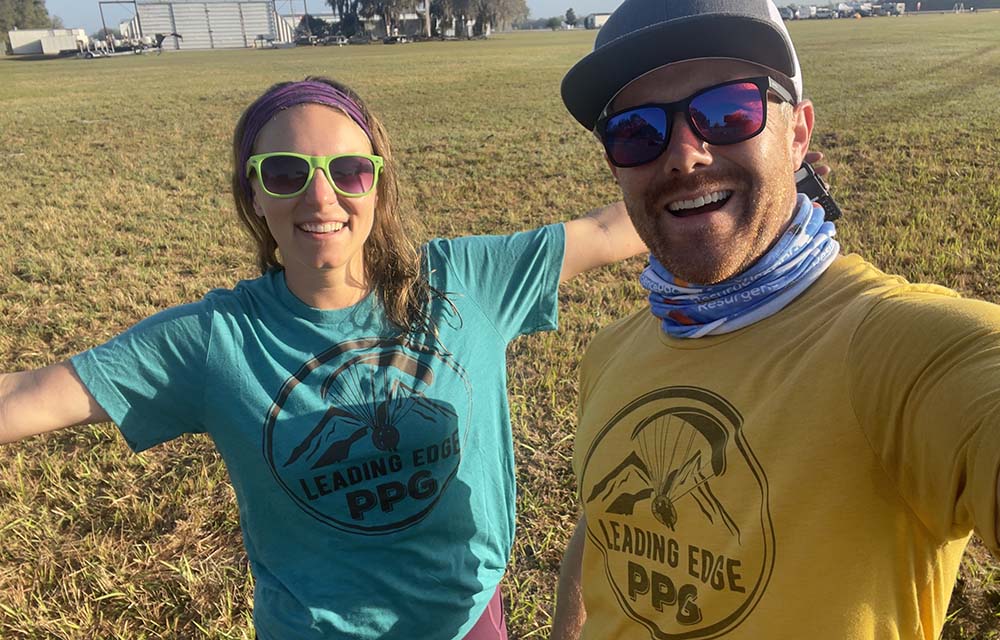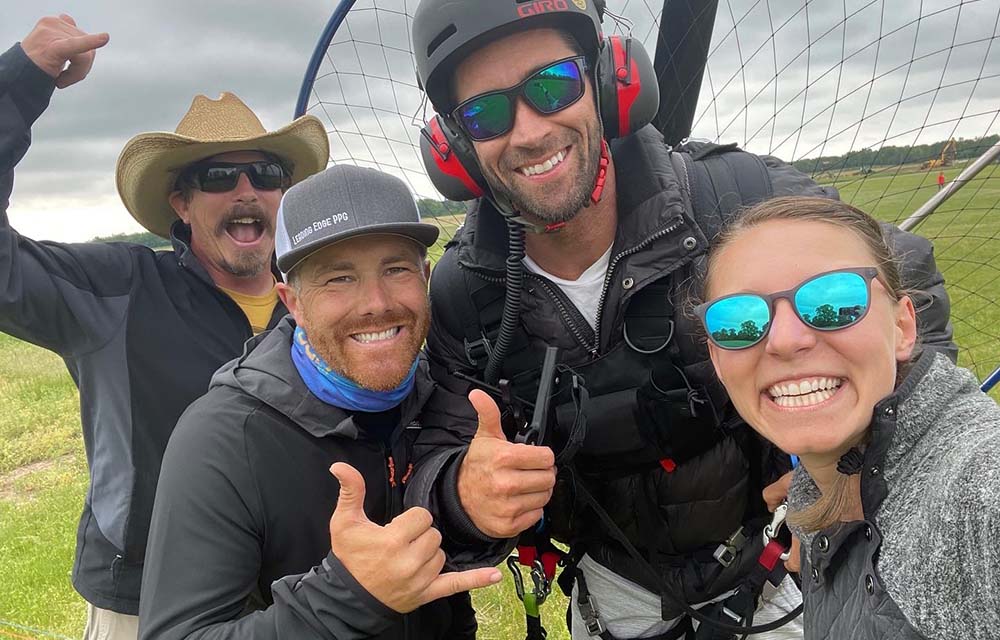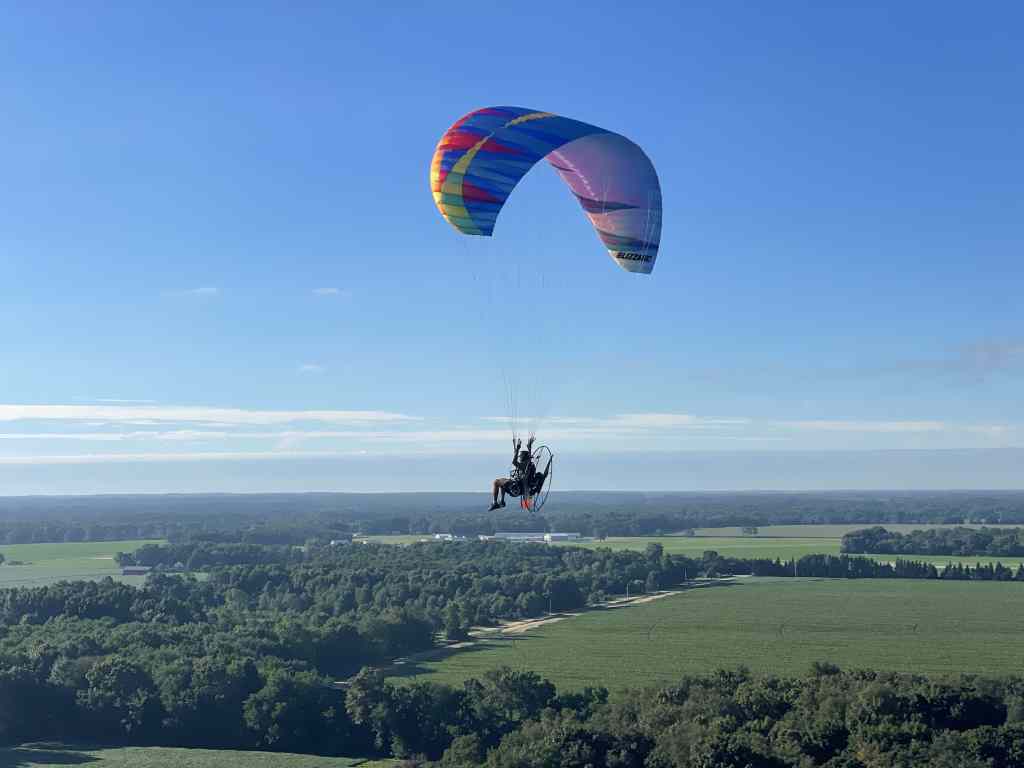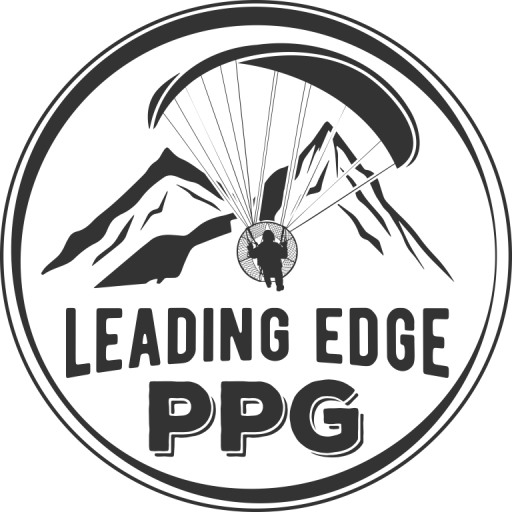Learn to get into the sky safely and enjoy it for years to come
Paramotor flight is the cheapest form of powered aviation and the best way to experience flying the way we all imagine as children; soaring over tree tops, exploring the earth.
Learn to fly and join an incredible community
We love to share our passion for flying. Starting with a thorough program, we methodically guide you through the steps to safely achieve your dream of flight and continue flying for many years.
Training and flying paramotors is fun! We ensure you will have the time of your life while creating lifelong memories. We can’t wait for you to join this incredible community of adventurers.
About Us
We are here to provide professional and dependable resources for powered paragliding training, equipment purchases, and gear servicing.
Justin Fox and Alexis Quintana have trained hundreds of people to fly paramotors. We each initially found paramotoring while working other professional careers. We are passionate about flying and sharing paramotor flight with others. We have made a full-time career of training pilots of all levels and servicing the gear that keeps them in the air.
There is something truly special about soaring above treetops, running into the air from your backyard, and feeling the air on your face. We can’t wait to guide you there and share the amazing experience of paramotor flight!

What People are Saying

Andrew Kruczynski

Justin and Alexis are both certified instructors for foot launch and wheel launch instruction.
We are certified tandem instructors with the USPPA and the ASC.
Whether you are looking to learn to fly as a beginner, transition from one discipline to another (foot launch and wheel launch), or are aspiring to level up your skills as an advanced pilot, tandem pilot, or new instructor, we have a proven program to make sure you succeed.
We are passionate about providing thorough and high-quality training to ensure students have the most success and enjoy their flying long after leaving training.


Calendar
Your first step toward flight is reaching out to us!
We look forward to sharing paramotoring with you! We are happy to answer any questions you have.
Reach out to us to learn more.
Telephone
Location
Leading Edge PPG
Home Training Field
Three Rivers Airport Ultralight Field (KHAI)
2010 Hov Aire Drive
Three Rivers, MI 49093
Conveniently located just south of Kalamazoo, MI
We spend most of our summer months at our home training location in Three Rivers, Michigan training when the weather is best for students to learn. During the winter, we relocate to warmer and more stable weather areas and have trained all over the country including in Michigan, Florida, Ohio, North Carolina, Virginia, Texas, Alabama, Georgia, and more. Our students span the world and are still regularly flying in places including Michigan, Illinois, Indiana, Wisconsin, Ohio, Virginia, Florida, New Jersey, Pennsylvania, Idaho, Alabama, Georgia, Massachusetts, Kentucky, El Salvador, Costa Rica, & Honduras.
Our primary business in the wintertime when weather isn’t ideal servicing the equipment that keeps our community in the air. We travel to train in more ideal weather climates and run a glider and motor shop during wintertime. Besides training, you can reach us for glider inspections, repairs, line replacements, motor maintenance, frame repairs, and more. We pride ourselves on being the premier full service paramotor shop in the industry.
